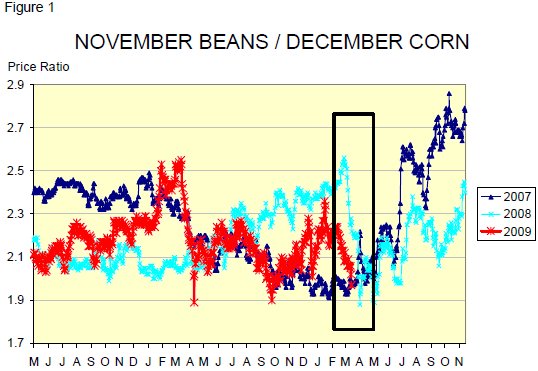



CME: Corn Costs to Depend on Nitrogen Purchases
US - CME's Daily Livestock Report for 13 March 2009.Spring is still a week away but it is time to begin the annual process of estimating US farmers’ planting intentions — and again this year, the numbers are very, very important. Perhaps not the estimates but certainly the final ones! On Friday, Informa Economics and Allendale, Inc. both released estimates for 2009 planted acreage. Allendale also included its trendline estimate for corn and soybean yields and its estimates for the total US corn and soybean crops. The numbers from both firms appear below. Both sets of estimates are based on producer surveys.

As you can see, the two firms’ estimates for corn acres are VERY different while their estimates for soybean acres are much closer. Last year’s actual figures were 85.982 million for corn and 75.718 million for corn. In 2007, a record 93.6 million acres were planted to corn and only 64.7 million were planted to soybeans. USDA’s survey-based estimates will be released in the 31 March Prospective Plantings report.
The planting decisions for a good portion of these acres were made last fall when many farmers applied nitrogen fertilizer on acres they were sure to plant to corn. Many acres are rotated between corn and soybeans every year but a growing number of acres are planted to continuous corn with that practice made more practical and profitable by modern corn hybrids with genetically engineered abilities to resist certain pests and tolerate specific herbicides. Planting decisions for those acres are not yet final and will largely hinge on the potential profitability of corn and soybeans.
Relative profits, of course, depend on relative prices and relative costs. Corn costs more to raise than do soybeans, primarily due to the need for more fertilizer. Corn yields, as can be seen from Allendale’s trend yields, are also about 4X those of soybeans. Corn costs this year are going to depend heavily on the timing of nitrogen purchases. A good amount of anhydrous ammonia was purchased last fall at over $1000/ton. That price is significantly lower now so the decision is going to vary greatly form producer to producer. Figure 1 shows the ratio of November soybean futures to December corn futures. This key ratio has moved decidedly in corn’s favor since mid-February. The ratio on Friday was even lower than the same week in 2007 — when those 93.5 million acres were planted to corn. It will take a lower ratio to get that done this year given higher corn costs but these price relationships appear to now favor corn.









